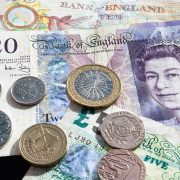How to use Leverage and Debt as an Investment Tool
Do you think that debt can ever be seen as a sign of financial power and strength? Surprisingly, it can. Leveraging debt can actually be a good investment tool when executed correctly – when borrowing to invest and increase your income.
Before taking on a commercial outlook, let’s first look at personal debt and how almost everyone uses it in everyday life. Most people have a mortgage, a car on finance, mobile phone contracts or credit cards, for example. We use these types of purchasing to manage our own personal cash flow or get a head-start. It would be impossible to have all of these things at once without spreading out the payments.
Debt can be used in the same way in business or in property portfolios. You may need a commercial mortgage to buy a business premises, lease a fleet of vehicles and use a credit card when necessary. You may have more cash flow issues in a business, because income can fluctuate month to month and can be unpredictable. There are also unplanned costs to consider, such as having to replace large machinery or renovate buildings. If you take out a loan and borrow money to invest in the business, and know you will be able to make the repayments and make more money from the improvements, then this can be classed as good debt.
How does leverage work?
Borrowing money for sound investments, in order to make more money, has long been a plan for getting richer. Leverage is a complex investment strategy which takes it one step further. It can refer to the amount of debt used to finance business assets, or the process of using borrowed money to increase the potential return on an investment.
Leverage is an important tool for businesses, which can be utilised to fund company growth. For example if a small business wants to expand its premises, it probably won’t have the cash available to do so. But the business owner is confident that the extra space will result in extra revenue, so they take out a business loan to carry out the work. When applying for a loan the provider may look at your current debt leverage to ensure it is manageable.
When considering the amount of leverage in a business, you should try the debt-to-equity ratio. This means calculating how many of your business assets (property, equipment, stock etc.) are financed by debt and how much is financed by equity or ownership. At the start of a business you may have a higher percentage financed by debt, but hopefully you can aim to reduce the amount over time.











